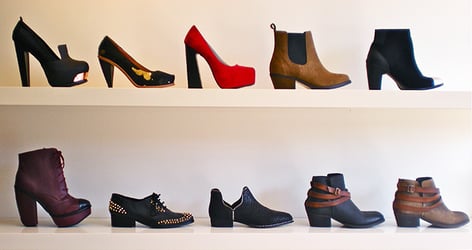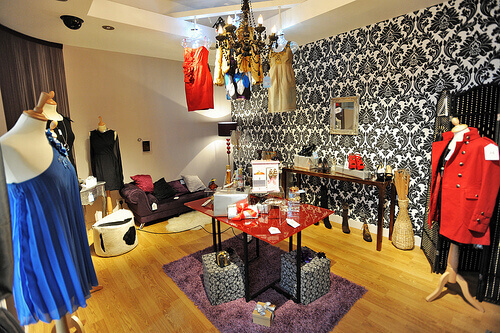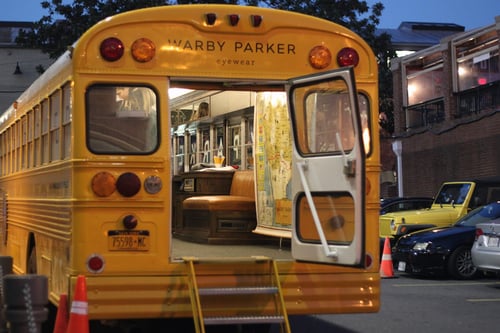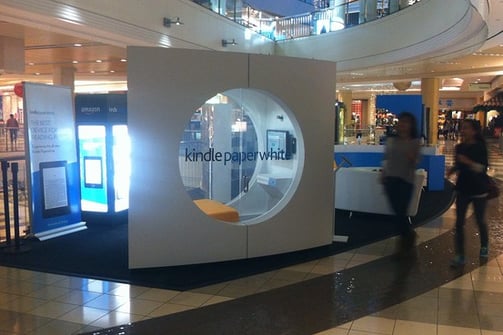By Miva | February 24, 2014

See why top ecommerce brands use Miva’s no-code platform to run
multiple stores, manage massive catalogs, and grow their revenue.
While ecommerce is growing quickly, that doesn’t mean that brick and mortar stores are going away anytime soon. In fact, there is a new medium in which the online and offline world collide in the form of pop-up shops. Pop-up stores create a buzz about a brand and also increase consumer loyalty to a brand because it makes them feel “in the know.” This powerful retail trend isn’t going anywhere anytime soon.
“The distinction between offline and online shopping continues to blur,” eBay president Devin Wenig said in an emailed statement. “Traditional retail isn’t going away; it is transforming.”
Brick and mortar stores and ecommerce stores don’t have to be separate business strategies for retailers. We know that many ecommerce stores first started out as physical stores. Of course, many stores keep their physical locations and use ecommerce for supplemental sales. Yet, for ecommerce stores that started out online, things are taking a turn. There is a stirring trend of ecommerce stores opening pop-up shops all over the place. Pop-up shops are temporary locations for ecommerce stores to promote and showcase their products in a brick-and-mortar setting.
“It’s a form of marketing that’s way more expensive than a billboard but less expensive than a full retail build-out with a five- or ten-year lease attached to it,” said Sucharita Mulpuru, a vice president and principal analyst at Forrester Research. “Pop-up shops have thrived in New York, where it wouldn’t be unusual for a prime storefront to have $10 million in yearly sales. For small e-commerce companies, even a few months of this earning potential can have a huge influence on overall sales.”
Here are just a few businesses that have taken their online retail store to the streets:

This ecommerce store was online-only for 6 years. Then, they decided to try a pop-up location in 2009, which was wildly successful. Piperlime now has a permanent store in SoHo and has been bought by the Gap, Inc. brand.

This ecommerce boutique store started out as a pop-up shop in Toronto, Ontario, and generated so much buzz, it is now a successful online store. The pop-up shop was only open for a few months, but in that time, Jaya Kahlon, owner of Sauvage, collected important data about her target market and built interest in the brands of her products. This led to the successful online store ShopSauvage.com, as well as a permanent location, just a block away from where the pop-up store premiered.
Storenvy is an online marketplace for independent retailers to sell their products in their own digital storefronts. Storenvy opened up a pop-up shop in San Francisco for what was going to be 30-days and has since been open for four months. It has been so successful that they are even looking to open more pop-up shops in the U.S. within the next few months. Storenvy’s pop-up shop is simply an extension of its ecommerce store. Consumers still purchase online and each vendor is in control of his/her spot in the store.
TechCrunch went to the actual Storenvy pop-up shop to meet with CEO Jon Crawford and see how the new strategy is going. You can see the video of the tour here:

This costume jewelry ecommerce retailer opened up their pop-up shop in New York last year for 2 months. The company has since launched TheBar, which is a small showroom at the company headquarters. BaubleBar wanted every customer to feel comfortable buying their products online which is why they decided to open up a physical shop in the first place.
“We are delivering an incredible product at a great value, and allowing first-time customers to touch and feel our product has a very impactful result,” explains Daniella Yacobovsky, the company’s cofounder.

Even Ebay has been testing out temporary stores to enable shoppers to browse physical inventory and purchase on their phones using QR codes. Some physical locations have screens with virtual products. Etsy has similar initiatives this year, which aim to create a bridge between the online and the physical marketplace.

The eyewear e-tailer Warby Parker uses a school bus as its pop-up shop and is touring the country. By using a mobile store, they are getting maximum exposure without the hassle and expenses of a short-term lease.
With pop-up shops about, showrooming is becoming less of a threat to retailers, but rather something that retailers can embrace. For example, Macy’s is merging its inventory systems to create a seamless shopping experience between in-store and online by using mobile technology.

Similar to Macy’s, Amazon is creating a new local logistics strategy for same-day shipping. In November of last year, Amazon opened a pop-up shop in a San Francisco mall. The temporary store sold branded covers and power adapters from vending machines. Meanwhile, shoppers can test the Kindle’s self-lighting screen under simulated low-light and outdoor lighting scenarios.
Consumers want to touch and feel the products that they are purchasing. In fact, that is one of the reasons why some consumers simply won’t purchase online. However, pop-up shops help eliminate that fear of purchasing something without first holding it in their hands.
It doesn’t matter if you have a large corporation or if you have a small independent business, the pop-up model serves a great opportunity to boost your brand and build your customer base. It is certainly an intriguing model to start exploring for your ecommerce store’s next step.
Back to topNo worries, download the PDF version now and enjoy your reading later...
Download PDF Miva
Miva
Miva offers a flexible and adaptable ecommerce platform that evolves with businesses and allows them to drive sales, maximize average order value, cut overhead costs, and increase revenue. Miva has been helping businesses realize their ecommerce potential for over 20 years and empowering retail, wholesale, and direct-to-consumer sellers across all industries to transform their business through ecommerce.
Visit Website